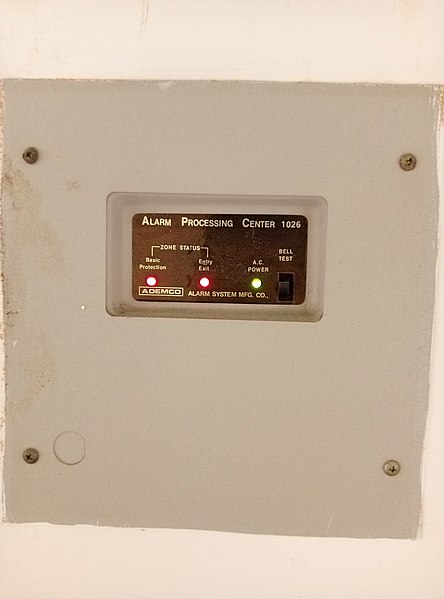A fire alarm control panel (FACP), fire alarm control unit (FACU), fire indicator panel (FIP), or simply fire alarm panel is the controlling component of a fire alarm system. The panel receives information from devices designed to detect and report fires, monitors their operational integrity, and provides for automatic control of equipment, and transmission of information necessary to prepare the facility for fire based on a predetermined sequence. The panel may also supply electrical energy to operate any associated initiating device, notification appliance, control, transmitter, or relay. There are four basic types of panels: coded panels, conventional panels, addressable panels, and multiplex systems.
A fire alarm control panel annunciator (top) and graphic annunciator (bottom)
A single-zone alarm control panel
A small alarm control panel (San Francisco, US)
A small alarm control panel (Russia)
A fire alarm system is a building system designed to detect, alert occupants, and alert emergency forces of the presence of fire, smoke, carbon monoxide, or other fire-related emergencies. Fire alarm systems are required in most commercial buildings. They may include smoke detectors, heat detectors, and manual fire alarm activation devices. All components of a fire alarm system are connected to a fire alarm control panel. Fire alarm control panels are usually found in an electrical or panel room. Fire alarm systems generally use visual and audio signalization to warn the occupants of the building. Some fire alarm systems may also disable elevators, which are unsafe to use during a fire under most circumstances.
A fire alarm horn strobe, pull station, and remote annunciator connected together in a fire alarm system
A fire alarm notification appliance as widely used under North American standards
A fire alarm control panel
Fire alarm speaker and pull station








